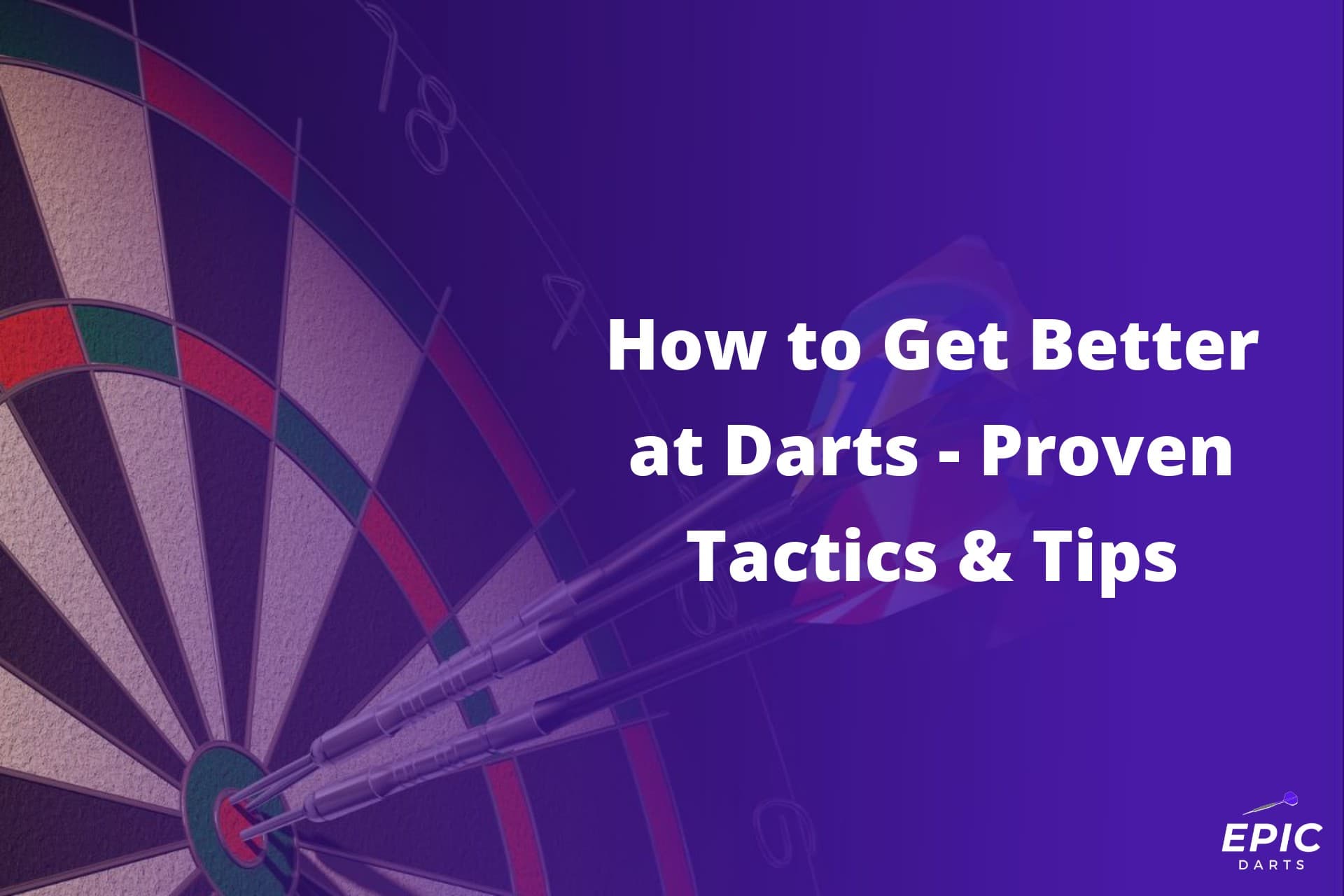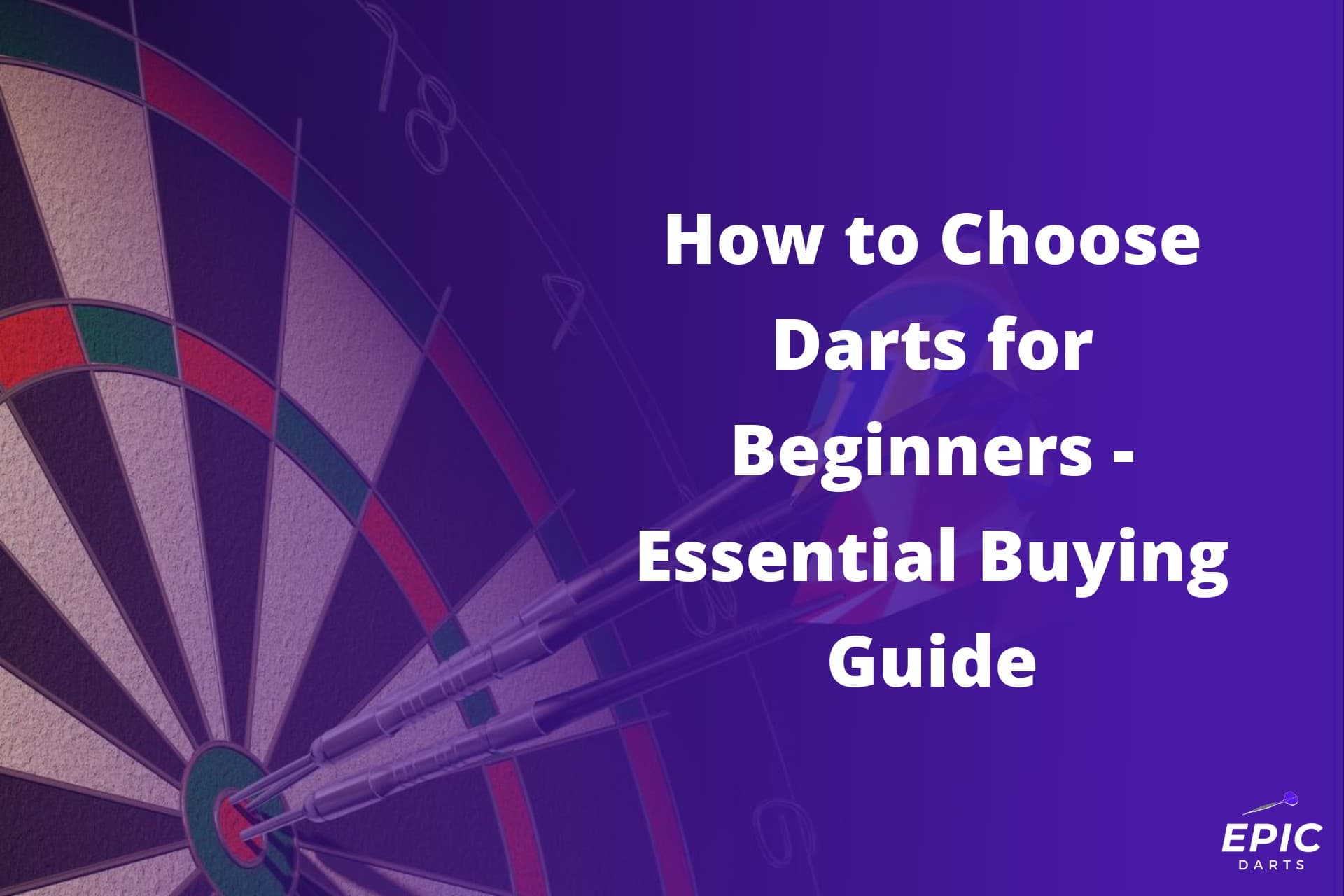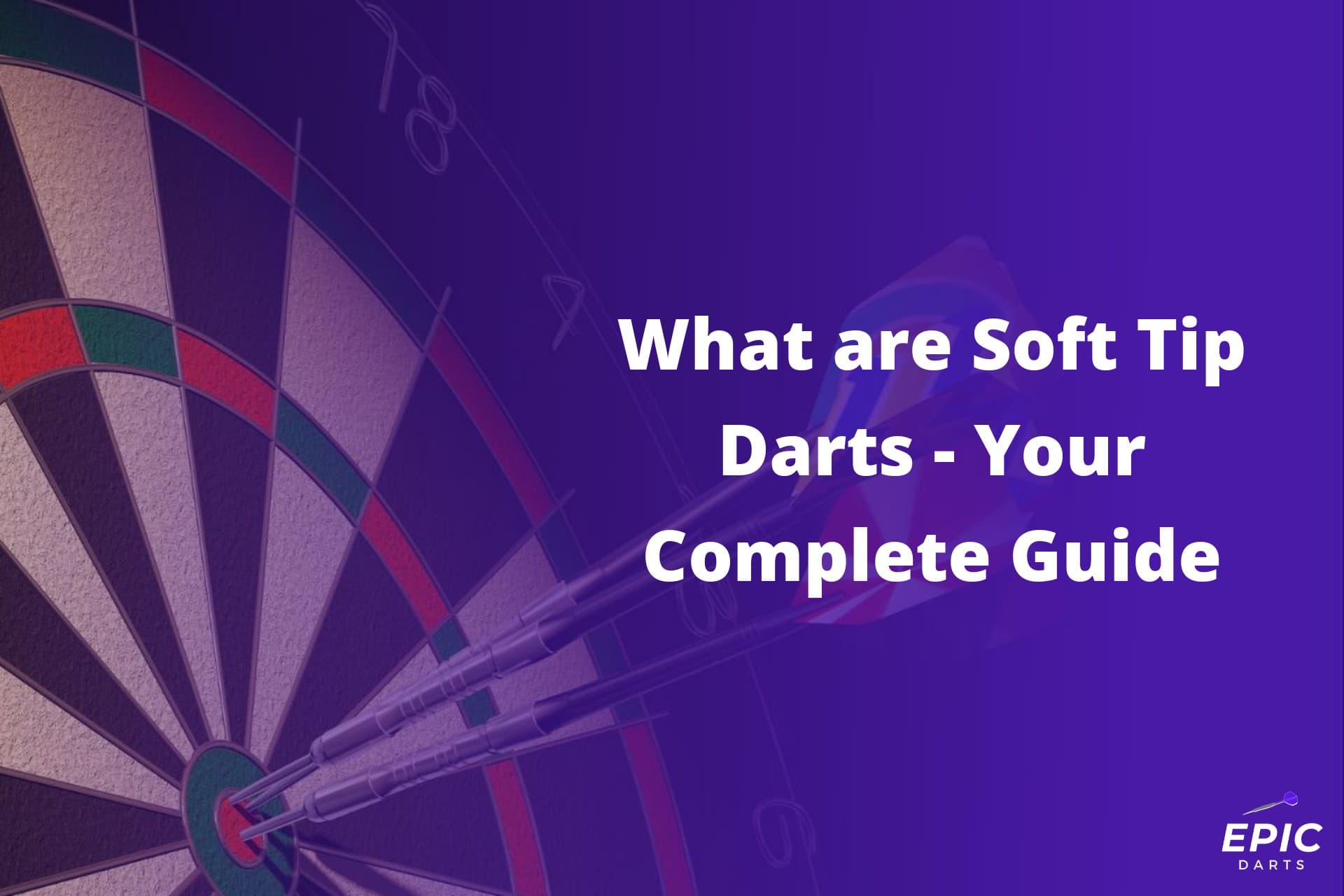Are you struggling with your aim when it comes to darts? Or perhaps, you’re having a hard time improving your overall score? Darts can be a fun and challenging game, but it can also be frustrating when you feel like you’re not improving. Whether you’re a beginner trying to get the hang of things or a seasoned player looking for that extra edge, there’s always room for improvement.
To get better at darts, you need to focus on three key areas: your stance, your throw, and your focus. In terms of stance, make sure you’re comfortable and balanced, with your dominant foot slightly forward. When throwing, aim to make your action smooth and consistent – the key is to move your arm in a single fluid motion while keeping the rest of your body still. Lastly, maintain your focus on the target and try to block out any distractions. Regular practice is also essential in order to refine these skills.
There are plenty of other factors that can influence your game. Things like understanding the scoring, choosing the right darts for you, and even learning from more experienced players can make a significant difference. So don’t stop here, continue reading for more detailed tips and strategies about how to elevate your darts game to the next level. Whether it’s about honing your skills or gaining a psychological edge over your opponents, there’s much more to learn for every aspiring dart player.
Tips for Throwing Better Darts
Master the proper grip technique for better control and accuracy.
Mastering the proper grip technique is essential. The way you hold the dart can greatly impact your control and accuracy. To achieve a consistent throw, start by holding the dart with three fingers: your index, middle, and ring finger. Place your thumb on the side of the dart for stability.
Experiment with different grips until you find one that feels comfortable and natural to you. Some popular grip styles include the pencil grip, where you hold the dart like a pencil, and the claw grip, where you curl your fingers slightly around the barrel. Find what works best for you and stick with it.
Consistency is key. Make sure to maintain a firm but relaxed grip throughout each throw. Avoid gripping too tightly as it can lead to tension in your hand and affect your aim. Practice your grip technique regularly to build muscle memory and improve your overall control.
Focus on maintaining a consistent throwing motion throughout each throw.
A consistent throwing motion is crucial in achieving accuracy in darts. Start by standing in a comfortable position with your dominant foot slightly forward. As you prepare to throw, keep your arm at eye level and align it with the target.
The key to a consistent throw lies in maintaining a smooth release and follow-through. Avoid jerky or abrupt movements that can disrupt your aim. Instead, focus on executing a fluid motion from start to finish.
To help develop muscle memory for consistency, practice throwing darts at a steady pace without rushing or hesitating between throws. Visualize hitting the target each time as you go through your throwing motion repeatedly.
Learn how to aim effectively by aligning your dominant eye with the target.
Aiming accurately is another vital aspect of getting better at darts. One effective technique is aligning your dominant eye with the target. Your dominant eye is the one your brain relies on more for visual input.
To determine your dominant eye, extend your arm and form a small triangle using your thumbs and index fingers. Look through the triangle at a distant object, then close one eye at a time. The eye that keeps the object centered within the triangle is your dominant eye.
Once you’ve identified your dominant eye, position yourself so that it aligns with the target. This alignment will help improve your aim and increase the chances of hitting your desired spot consistently.
Practice adjusting your power and speed to achieve optimal dart flight.
The power and speed with which you throw the dart greatly affect its flight trajectory. It’s important to find the right balance to achieve optimal results. Experiment with different levels of power and speed during practice sessions to see what works best for you.
If you’re consistently overshooting or undershooting your target, it may be necessary to make adjustments. For longer distances, increase the power behind your throw while maintaining control. Conversely, for shorter distances, reduce the force exerted while focusing on accuracy.
Remember that practice makes perfect. Take note of how different adjustments impact your throws and make gradual improvements over time.
How to Actually Improve in Darts
Analyze your gameplay by recording and reviewing your throws.
One of the most effective ways to improve your darts game is to analyze your gameplay. By recording and reviewing your throws, you can identify areas where you may be going wrong and make necessary adjustments. Set up a camera or use a smartphone to record yourself while playing. This will allow you to closely observe your technique, stance, and release.
When reviewing the footage, pay attention to how consistent your throws are. Are you consistently hitting the target or are there patterns of inconsistency? Look for any flaws in your form or release that might be affecting your accuracy. Take note of any tendencies or bad habits that may have gone unnoticed during live play.
Seek feedback from experienced players or coaches to identify areas for improvement.
Another valuable way to improve in darts is by seeking feedback from experienced players or coaches. They can offer valuable insights into areas where you may need improvement. Whether it’s a friend who is skilled at darts or joining a local club with knowledgeable members, their expertise can help you refine your skills.
Ask them to observe your technique and provide constructive criticism on aspects such as grip, stance, aim, and follow-through. Their fresh perspective might reveal issues that you were unaware of. They might suggest specific drills or exercises tailored to address those weaknesses.
Utilize training aids such as dartboards with built-in scoring features or virtual training apps.
To enhance your practice sessions, consider utilizing training aids specifically designed for darts improvement. Dartboards with built-in scoring features can provide immediate feedback on each throw’s accuracy and consistency. These boards often have digital displays that show detailed statistics about each dart’s position on the board.
Virtual training apps are another useful tool for improving in darts. These apps simulate real-life scenarios and offer various training exercises that focus on different aspects of the game like accuracy, speed, and strategy. They can provide a fun and interactive way to practice and track your progress over time.
Join local leagues or tournaments to gain valuable experience and exposure.
One of the best ways to improve in darts is by gaining practical experience through participation in local leagues or tournaments. These events offer opportunities to compete against players of different skill levels, allowing you to learn from their strategies and techniques.
By actively participating in these competitions, you’ll gain valuable exposure to different playing styles, pressure situations, and varying levels of competition. This exposure will help you develop mental toughness, adaptability, and the ability to perform under pressure. Competing regularly will enable you to gauge your progress over time as you see improvements in your game.
Creating an Effective Practice Routine
To improve your darts game, it’s essential to establish a consistent and effective practice routine. By dedicating regular time to practicing specific aspects of your game, you can enhance your technique, consistency, and overall performance. Here are some key strategies to help you create an efficient practice routine:
Set aside dedicated time for regular practice sessions
One of the most crucial elements of improving at darts is committing to regular practice sessions. It’s important to carve out specific blocks of time in your schedule solely for practicing. By doing so, you ensure that you give yourself ample opportunity to work on your skills without distractions or interruptions.
Focus on specific aspects of your game during each practice session
Rather than aimlessly throwing darts during practice, it’s beneficial to focus on particular areas that need improvement. For example, if accuracy is a weak point for you, dedicate a portion of your practice session solely to hitting specific targets consistently. If strategy is an area where you struggle, spend time working on different scenarios and shot selections.
Incorporate drills targeting different skill areas
To make your practice sessions more structured and effective, incorporate drills that target various skill areas in darts. This could include accuracy drills where you aim for specific segments or numbers on the dartboard repeatedly. Consistency drills can involve throwing a set number of darts at a target and aiming for tight groupings. Strategic drills may involve playing out different checkouts or practicing certain combinations.
Vary the difficulty level of your practice exercises
While it’s essential to start with exercises that match your current skill level, it’s equally important to challenge yourself as you progress. Gradually increase the difficulty level of your practice exercises over time to push yourself outside of your comfort zone. This will help develop new skills and improve existing ones.
Keep track of progress through performance metrics
Tracking your progress is vital in any endeavor, and darts is no exception. Keep a record of your performance metrics, such as average scores or checkout percentages, to monitor your improvement over time. This not only provides motivation but also helps you identify areas that still need work.
By following these guidelines and incorporating them into your practice routine, you can steadily enhance your darts skills. Remember that consistent practice and dedication are key to getting better at darts. So, grab your darts, set up a practice area, and start working on specific aspects of your game today!
- Practice routines
- Practicing
- Practice session
- Routine
- Practice
- Technique
- Consistency
- Work
- Ways
Playing Against Skilled Opponents for Growth
Playing against skilled opponents is a crucial step in improving your darts game. While it may be tempting to stick to playing against players of similar skill levels, seeking out opportunities to challenge yourself against more experienced competitors can greatly enhance your skills and accelerate your progress.
One of the key benefits of playing against skilled opponents is the opportunity to observe their techniques, strategies, and decision-making during matches. By closely watching how they approach the game, you can gain valuable insights that you can incorporate into your own playstyle. Take note of their stance, grip, throw, and overall approach to each shot. Analyze how they strategize and make decisions based on the current game situation. This observational learning can provide you with new ideas and perspectives that you might not have considered before.
Embracing losses as valuable learning experiences is another important aspect when playing against stronger opponents. Losing matches can be disheartening at times, but it’s essential to shift your mindset and view these defeats as opportunities for growth rather than failures. Reflect on what went wrong during the game and identify areas that need improvement. Did you struggle with accuracy? Were you unable to maintain focus under pressure? Use these insights to work on specific aspects of your game during practice sessions.
Maintaining a positive mindset while competing against stronger opponents is vital. Instead of solely focusing on winning the match, shift your attention towards personal growth and development as a player. Understand that facing tougher competition will naturally result in more losses initially; however, this exposure will ultimately lead to improved performance in the long run. Celebrate small victories such as hitting high scores or executing successful strategies even if you don’t win the entire match.
Seeking out players who are better than you also provides an excellent opportunity for friendly rivalry and healthy competition. Engaging with skilled competitors not only challenges your abilities but also motivates you to push beyond your limits. As you strive to match their level of play, you’ll find yourself practicing more frequently and dedicating additional time to research and study the sport. This increased effort will undoubtedly have a positive impact on your overall performance.
Experimenting with Dart Configurations for Performance
Experimenting with different dart configurations can make a significant difference in your performance. By adjusting various aspects of your darts, such as barrel weights and shapes, shaft lengths and materials, flights, and even points or grip enhancers, you can optimize your equipment to suit your throwing style and enhance your overall accuracy. Let’s explore some key areas to focus on when experimenting with dart configurations.
Finding the Perfect Barrel Configuration
The barrel of a dart is where you hold it during the throw, making it crucial to find a configuration that suits your grip and throwing style. One important factor to consider is the weight of the barrel. Some players prefer heavier barrels for added stability and control, while others may find lighter barrels more comfortable. Experimenting with different barrel weights will help you determine what works best for you.
The shape of the barrel can also impact your throw. Different shapes offer varying levels of grip and control. For example, straight barrels provide a consistent grip throughout the throw, while tapered barrels allow for easier release. By trying out different barrel shapes, you can discover which one feels most natural in your hand and helps improve your accuracy.
Optimizing Shaft Lengths and Materials
The shaft plays a vital role in stabilizing the dart during flight. Experimenting with various shaft lengths can help you find the optimal balance between stability and ease of throwing. Longer shafts provide greater stability but may require more force during release, while shorter shafts offer quicker release but may be less stable.
Furthermore, consider exploring different materials for shafts such as aluminum or nylon. Each material has its own characteristics that can affect flight performance. Aluminum shafts are durable but may add weight to the rear end of the dart while nylon shafts are lightweight but prone to breakage.
Enhancing Flight Trajectory with Different Flights
The flight of a dart greatly influences its trajectory and can significantly impact your accuracy. Experimenting with different types of flights allows you to find the ideal combination that enhances your dart’s performance. Flights come in various shapes and sizes, each affecting the drag and stability of the dart during flight.
Some popular flight options include standard flights, slim flights, kite-shaped flights, and teardrop-shaped flights. Standard flights offer more stability but may experience greater drag, while slim flights reduce drag but are less stable. Kite-shaped and teardrop-shaped flights provide a balance between stability and reduced drag. By trying out different flight options, you can determine which one suits your throwing style best.
Considering Specialized Dart Points or Grip Enhancers
In addition to barrel, shaft, and flight configurations, there are other accessories that can further enhance your dart control and consistency. Specialized dart points offer improved grip on the board, reducing bounce-outs and increasing scoring potential. These points often feature unique designs or materials that provide better traction on the dartboard surface.
Grip enhancers such as wax or resin can also be useful tools for optimizing control over your darts. Applying these substances to your fingers or barrel helps create a more secure grip throughout the throw, reducing slippage and improving consistency.
Enhancing Your Stance for Improved Accuracy
To become a better dart player, one of the key aspects you need to focus on is your stance. A balanced and stable stance not only promotes accuracy and precision but also ensures a consistent throwing motion. Here are some tips to help you enhance your stance and take your dart game to the next level.
Experiment with Foot Positions and Angles
Finding the right foot position and angle is crucial for stability and balance during your throw. Start by positioning your dominant foot slightly ahead of the other, creating a solid base. This allows you to transfer weight smoothly from back to front during the throw, generating power and control. However, everyone’s body mechanics are different, so don’t be afraid to experiment with different foot positions and angles until you find what works best for you.
Distribute Weight Properly
Weight distribution plays a significant role in maintaining stability while throwing darts. Ideally, most of your weight should be on your front foot as it provides better control over your aim. This doesn’t mean completely neglecting your back foot; instead, think of it as an anchor that keeps you grounded. By distributing weight properly between both feet, you’ll achieve a stable foundation that enhances accuracy.
Maintain Eye Level Focus
Keeping your eyes focused on the target is essential for accurate dart throwing. Make sure that your eye level aligns with the height of the dartboard. This helps establish consistency in aiming since deviations in eye level can lead to inconsistencies in throws. Maintaining a relaxed upper body posture while focusing on the target will improve both precision and confidence in hitting those bullseyes.
Strengthen Your Core
A strong core is vital for maintaining balance throughout each throw. Incorporate exercises that improve core strength and flexibility into your training routine. Planks, Russian twists, or yoga poses like Boat Pose can significantly enhance stability during throws by engaging abdominal muscles, obliques, and lower back. A stable core allows you to maintain control over your upper body, resulting in better dart-throwing performance.
Find Your Grip
The grip is another crucial aspect of enhancing your stance. Experiment with different grip styles and find the one that feels most comfortable and secure in your hand. Some players prefer a pencil grip, while others opt for a claw or fingertip grip. The key is to find a grip that allows you to hold the dart firmly without tensing up your hand or fingers. Remember, a relaxed grip promotes fluidity in your throw.
Taking Your Dart Skills to the Next Level
Congratulations on completing all the sections before the conclusion! You’ve learned valuable tips and strategies to improve your dart skills. Now, it’s time to put them into action and take your game to the next level. With consistent practice and determination, you can become a formidable darts player.
To continue improving, make sure you stick to your practice routine regularly. Consistency is key in developing muscle memory and honing your accuracy. Don’t shy away from challenging opponents; playing against skilled players will push you out of your comfort zone and help you grow as a player. Lastly, don’t be afraid to experiment with different dart configurations and stances to find what works best for you.
Now that you have all the tools at your disposal, it’s time to grab those darts and start practicing! Remember, Rome wasn’t built in a day, so be patient with yourself. Keep pushing forward, stay focused on your goals, and enjoy the journey of becoming a better darts player.
FAQs
Can I improve my dart skills even if I’m a beginner?
Absolutely! Everyone starts somewhere, and even beginners can improve their dart skills with practice and dedication. Start by focusing on the basics like grip, stance, and throwing technique. As you develop these fundamentals, gradually increase the difficulty of your practice sessions.
How often should I practice darts?
Consistency is crucialIncluding darts. Aim for regular practice sessions rather than sporadic bursts of activity. Ideally, set aside dedicated time each week for practice. Even just 30 minutes of focused practice every few days can yield significant improvements over time.
Should I invest in expensive darts?
The cost of darts varies greatly depending on factors like material quality and brand reputation. While expensive darts may offer some advantages for professional players or enthusiasts who play frequently, they are not necessary for beginners or casual players. Focus on finding darts that feel comfortable in your hand and suit your throwing style, regardless of the price.
Can playing against better opponents really help me improve?
Absolutely! Playing against skilled opponents challenges you to elevate your game and adapt to different strategies. It exposes you to new techniques and tactics that you can learn from and incorporate into your own playstyle. Embrace the opportunity to face stronger opponents as a chance for growth rather than being intimidated by them.
Are there any specific exercises I can do to improve my dart skills?
While there are no specific exercises tailored solely for darts, certain activities can enhance the skills needed for the game. For example, focusing on hand-eye coordination exercises like juggling or playing catch can improve your aim and accuracy. Strength training exercises for your arm muscles can help develop a more consistent throwing motion.





